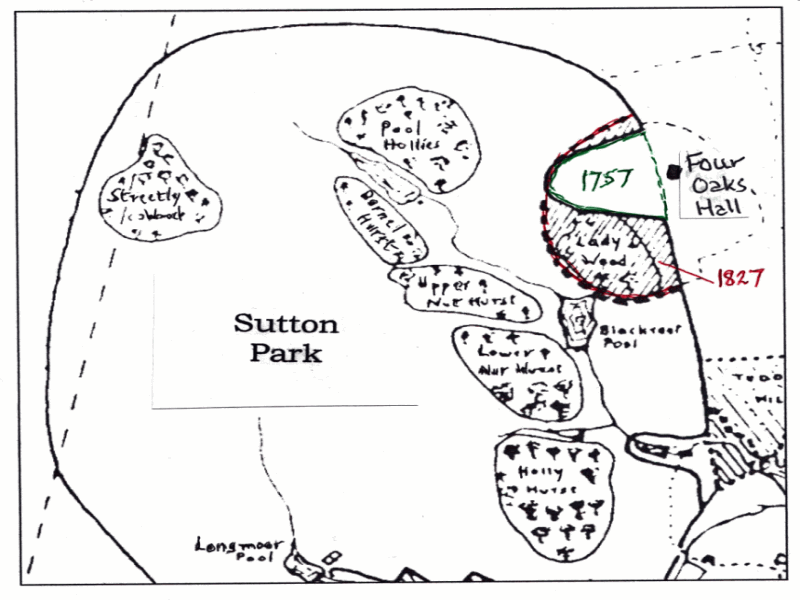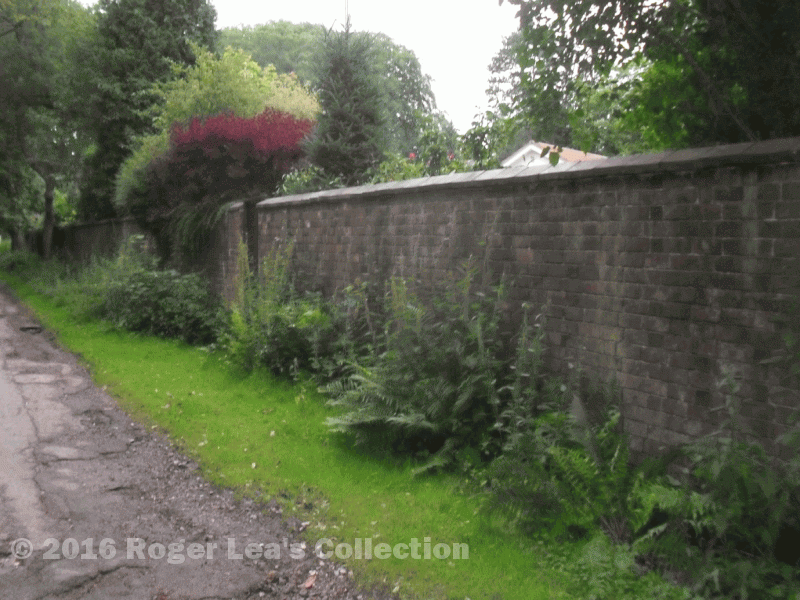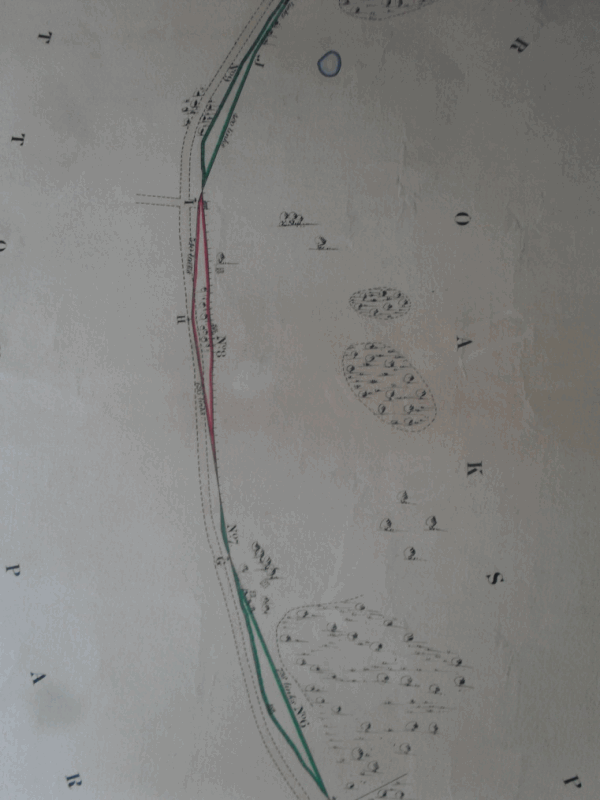It is seven miles round the edge of Sutton Park, and traditionally the boundary was a wooden fence known as palings - way back in 1569 two boys, George and Anthony Careless, were fined a shilling each for breaking down the park palings. But for the last 150 years one mile of the boundary has been formed by a high wall of Staffordshire brick. The wall was built to separate the park of Four Oaks Hall from Sutton Park.
When Lord Ffolliot erected Four Oaks Hall at the beginning of the eighteenth century it was built close to the boundary of Sutton Park. The next owner, Simon Luttrell, was allowed to take 46 acres from Sutton Park to form a private park of his own in 1757. This park was too small for Sir Edmund Hartopp, owner of Four Oaks Hall in the 1820s, and he was able to take in another 63 acres from Sutton Park to enlarge Four Oaks Park. The old Sutton Park boundary disappeared, and the new boundary was a paling fence.
By 1850 Sutton Park was attracting a large number of working-class visitors from Birmingham and the Black Country, and the next owner, Sir William Hartopp, did not like his park to be on view to common folk. At a meeting of the Warden and Society (i.e. the corporation) of Sutton on June 17th 1857, it was reported “that Sir William Hartopp is intending to build a wall between Four Oaks Park and Sutton Park…and that it would be advantageous to him as well as to this Corporation for the wall in several places to be in a much straighter line than the present paling, which may be effected by a give and take line.”
There is a detailed plan of the wall, dated 21st October 1858, showing that Hartopp lost six pieces of ground totalling just over half an acre to Sutton Park, but gained eight pieces totalling a quarter of an acre back (two of these were a mere fifteen square yards). Hartopp was the lessee of Bracebridge Pool at the time and would drive his carriage from the Hall to the pool, so there was a gateway in the wall with handsome pillars topped by heraldic beasts.
Four Oaks Park is now a housing estate, and the hall is long gone, and although the gateway has been vandalised and blocked up, the wall remains, just too high to see over.


